Love them or hate them, spiders are fascinating creatures. These arachnids live everywhere except Antarctica, and there are a whopping 50,000-plus spider species in the world. Spiders can perform amazing feats; after all, just look at their web-spinning skills. Some are incredibly fast. Ray spiders, for example, can accelerate faster than the cheetah, in excess of 60 miles per hour. If you’re intrigued by these eight-legged wonders, check out our list of the top 10 fastest spiders in the world.
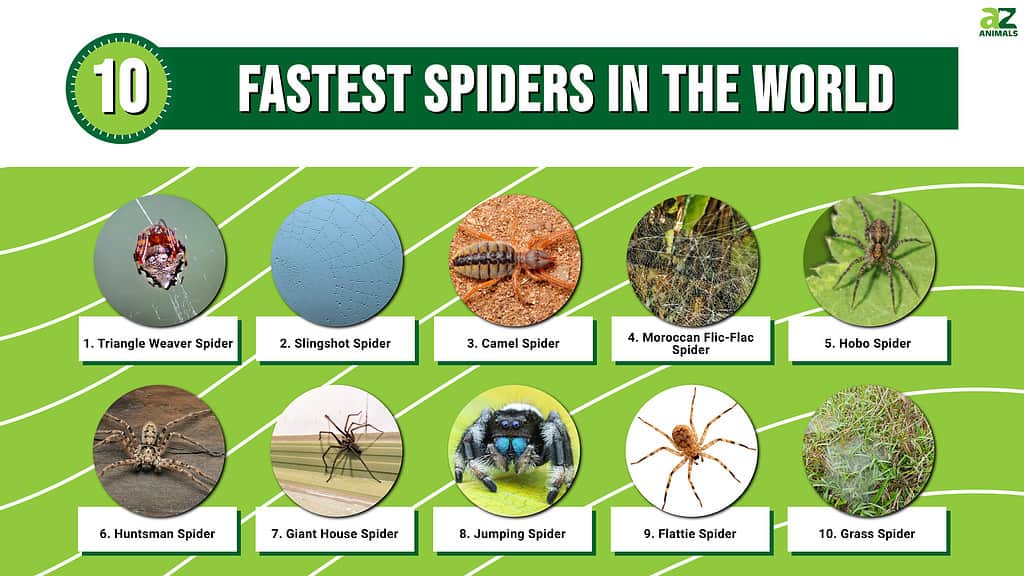
1. Triangle Weaver Spider — 1692 Mph
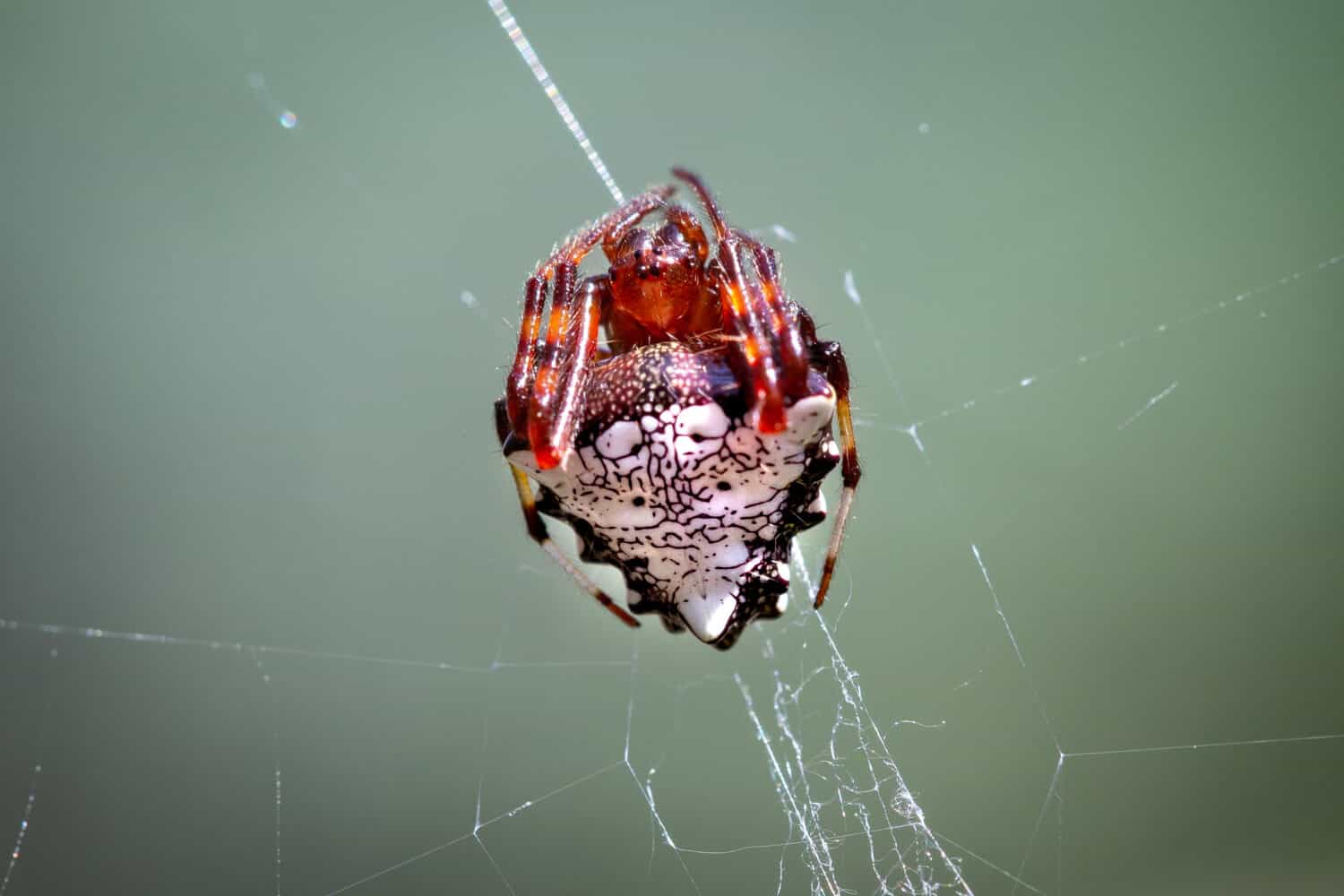
Triangle weaver spiders propel themselves at speeds up to 1700 miles per hour.
©Tommy Daynjer/Shutterstock.com
The triangle weaver is an orb-weaving spider that can travel at speeds of approximately 1,692 miles per hour. Bearing the scientific name of Hyptiotes cavatus, these arachnids have a bilaterally symmetrical shape resembling a triangle, hence their common name. They’re non-venomous and non-aggressive, and can even be a valuable addition to gardens and yards. These speedy spiders tend to eat mosquitoes, gnats, flies, and other invasive pests.
These visually stunning arachnids reside throughout the United States. Triangle weavers tend to settle in Eastern and Northeastern states including Maine, Michigan, and Illinois.
2. Slingshot Spider — 540 Mph
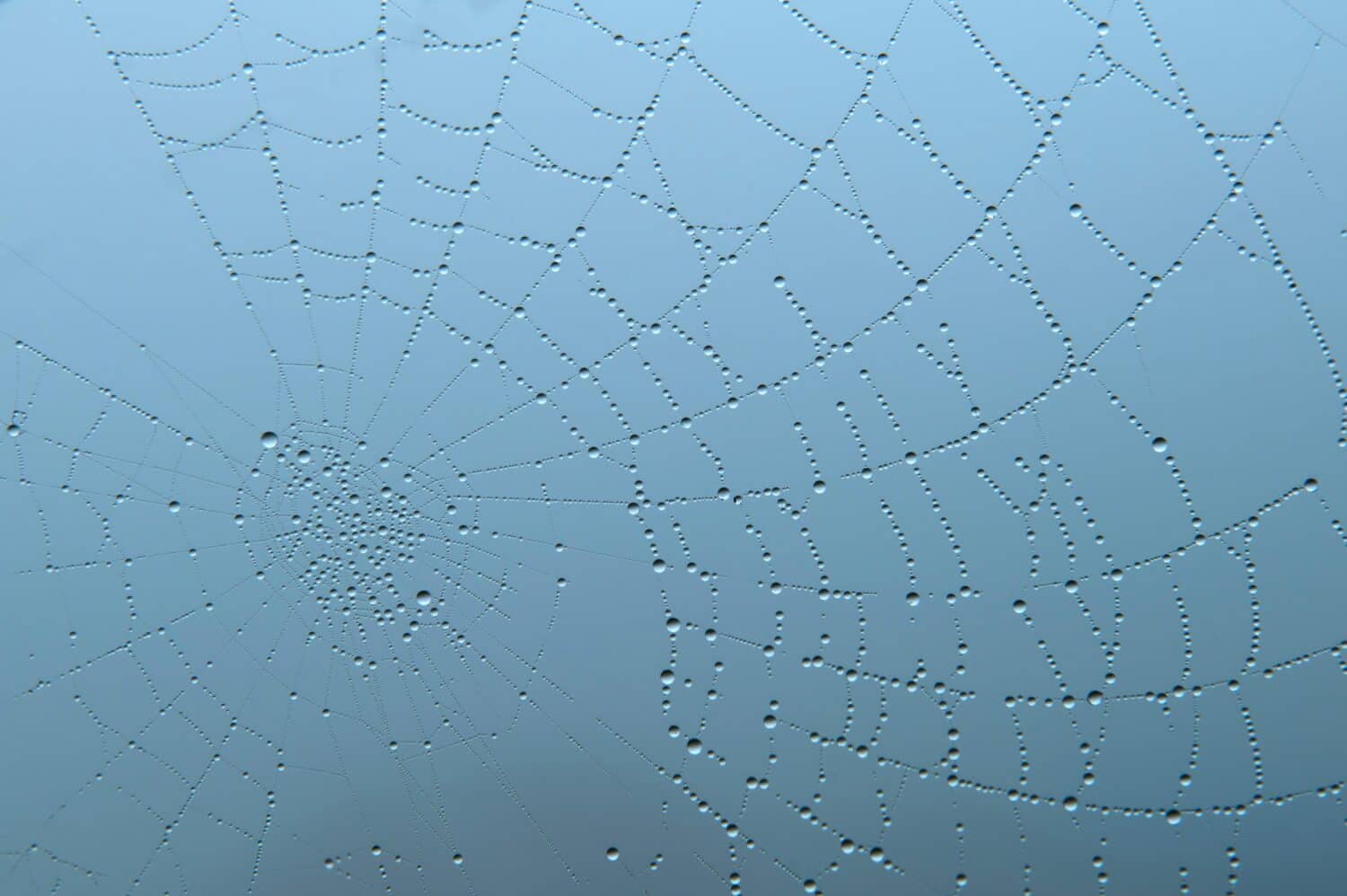
Slingshot spiders use their webs as catapults to travel long distances at lightning speed.
©Osman Temizel/Shutterstock.com
The slingshot spider is a member of the Theridiosomatidae family of arachnids. These ray spiders fall into one of seven species. The nickname “slingshot spider” is likely due to this arachnid’s ability to use its web to propel itself long distances. When it comes to acceleration, the slingshot spider is incredibly fast — clocking in at approximately 540 miles per hour. These arachnids have a running speed of up to 1 meter per second, which is around 2.23 miles per hour.
There are seven species of ray spiders that utilize this slingshot behavior. These arachnids use tension to create a conical web shape that operates as a high-powered springboard. Slingshot spiders thrive in South America’s tropical climates including in Peru, Brazil, and Argentina.
3. Camel Spider — 10 Mph
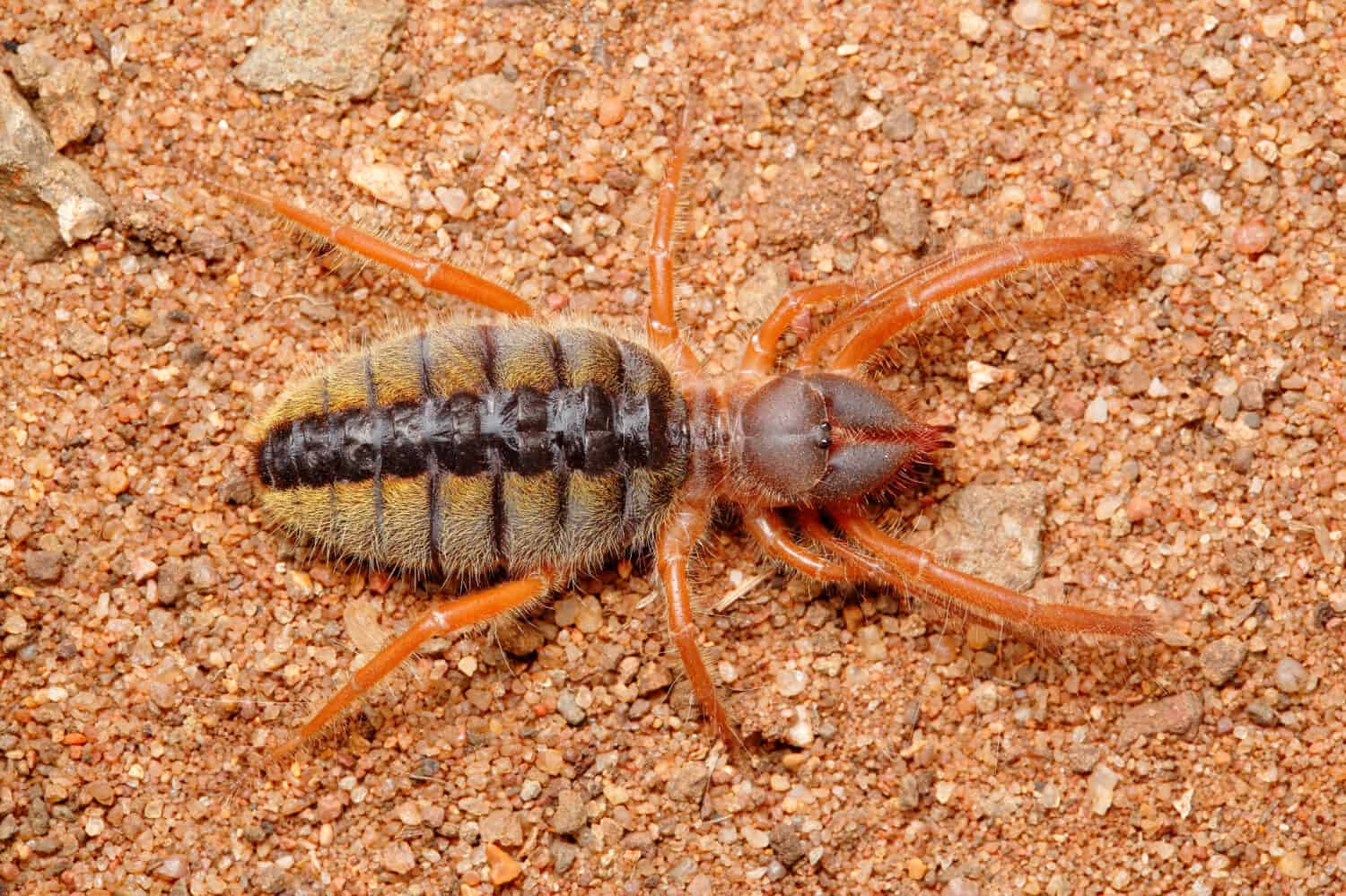
While not a true spider, the so-called camel spider is an arachnid.
©Ondrej Michalek/Shutterstock.com
The camel spider, or the Solifugae order, lands on our list for its top running speed of 10 miles per hour. There are more than 1,000 species of camel spider, which aren’t actually spiders at all. They resemble both scorpions and spiders, and they are arachnids. While a scientist may argue the fact, many people consider these desert creatures spiders. They’re three to six inches in length and covered with hairs that protect them against hot temperatures. The typical diet of a camel spider consists of small animals such as insects, reptiles, and birds.
Camel spiders live in deserts around the world. The Middle East and the Southwestern United States are two desert regions these arachnids call home.
4. Moroccan Flic-Flac Spider — 3.60 Mph
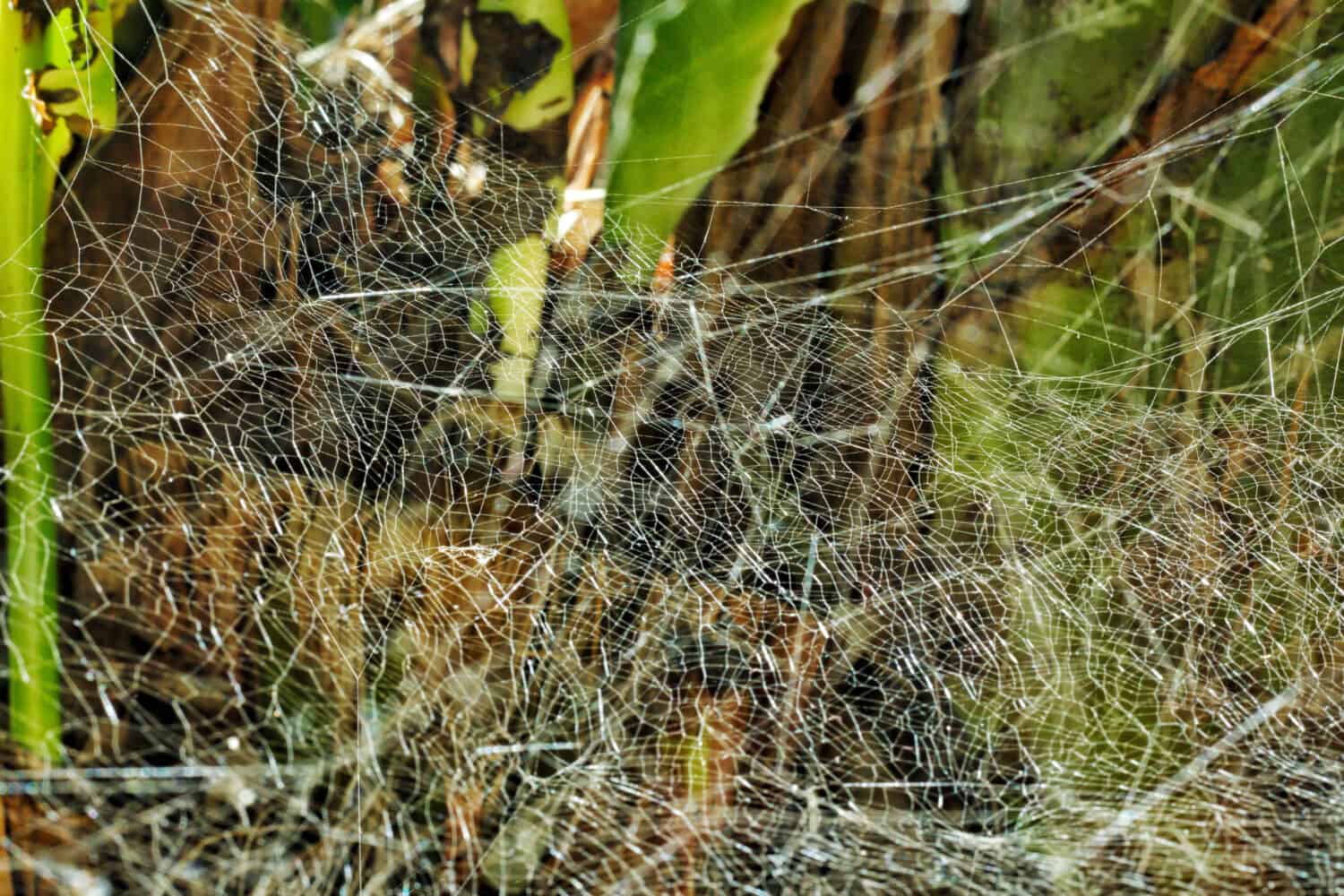
Moroccan flic-flac spiders are the only arachnids to use a cartwheel motion to move forward.
©Anas Lahoui/Shutterstock.com
The Moroccan flic-flac spider (Cebrennus rechenbergi) is unique in its ability to propel itself using a somersault motion. This unique locomotion earns them the name of cartwheeling spiders. Discovered in 2006 by Ingo Rechenberg, from whom its scientific name derives, the motion of this arachnid is the inspiration for current research in the field of biometrics. Technically, this gymnast of the spider world is a huntsman spider. It’s an incredibly fast and effective hunter, preying on moths during early morning hours.
As its moniker implies, these spiders are native to Morocco — the Erg Chebbi desert, to be precise. Other creatures that live in Morocco include the fennec fox and crested porcupine, to name just two.
5. Hobo Spider — 2.23 Mph
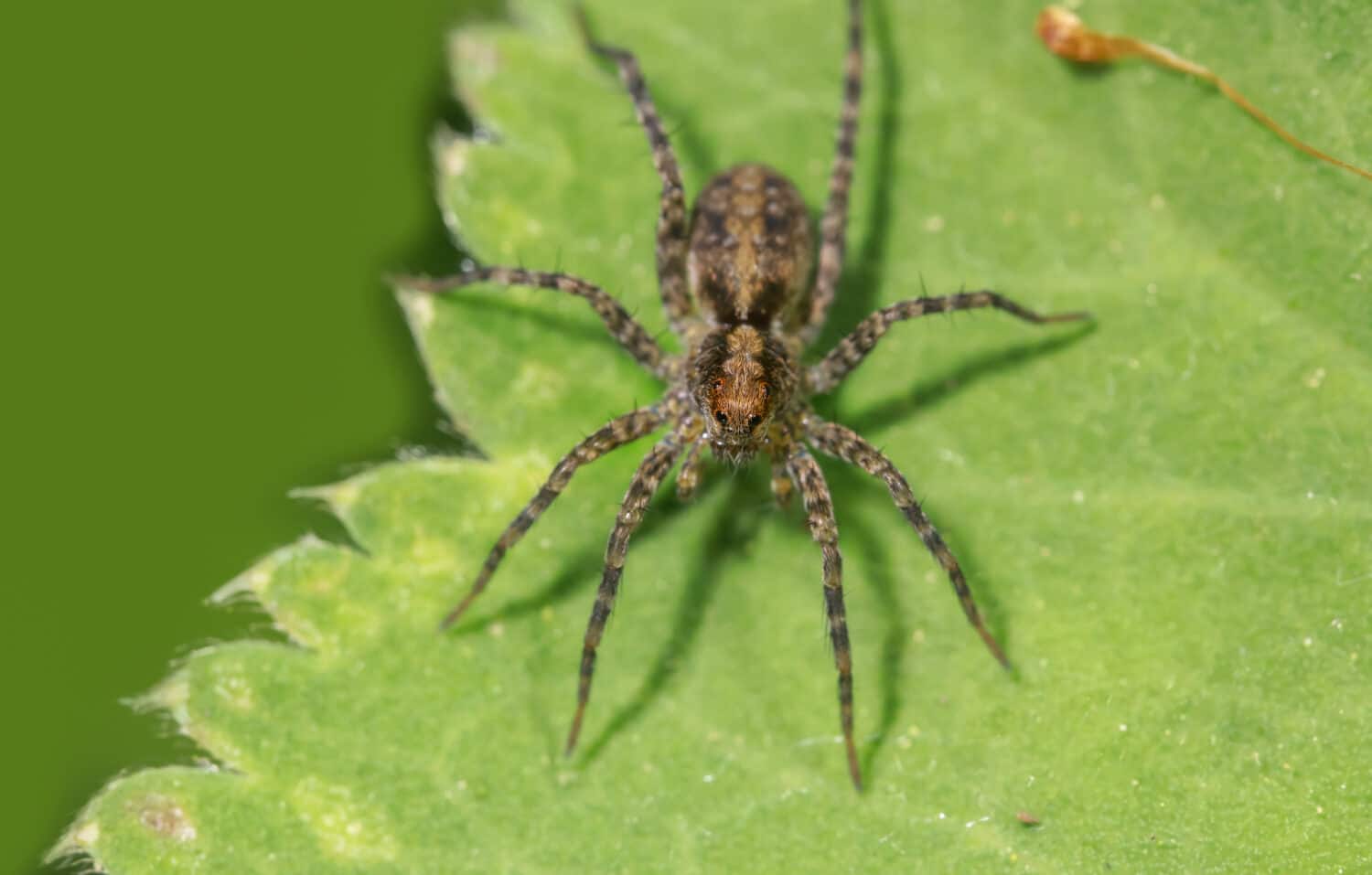
Hobo spiders are fast-moving arachnids nicknamed for their migratory tendencies.
©SNEHIT PHOTO/Shutterstock.com
The hobo spider (Tegenaria agrestis) can reach running speeds of up to 2.23 miles per hour, or around one meter per second. They move from place to place rather than settling in one spot, hence the name. These non-venomous spiders also have the moniker of funnel-web spiders because of their web shape. Although hobo spiders can move quickly, they catch most of their prey by waiting for it to fall into the funnel-shaped web they’ve created. Crevices, cracks, and similar areas are prime real estate for these common arachnids, which feed on flies, ants, and similar small insects.
Hobo spiders are largely solitary and moderately aggressive. Although they’re non-venomous, a bite may cause noticeable discomfort. These funnel-web builders are native to Europe and also commonly found in Northwestern states such as Utah.
6. Huntsman Spider — 2.23 Mph
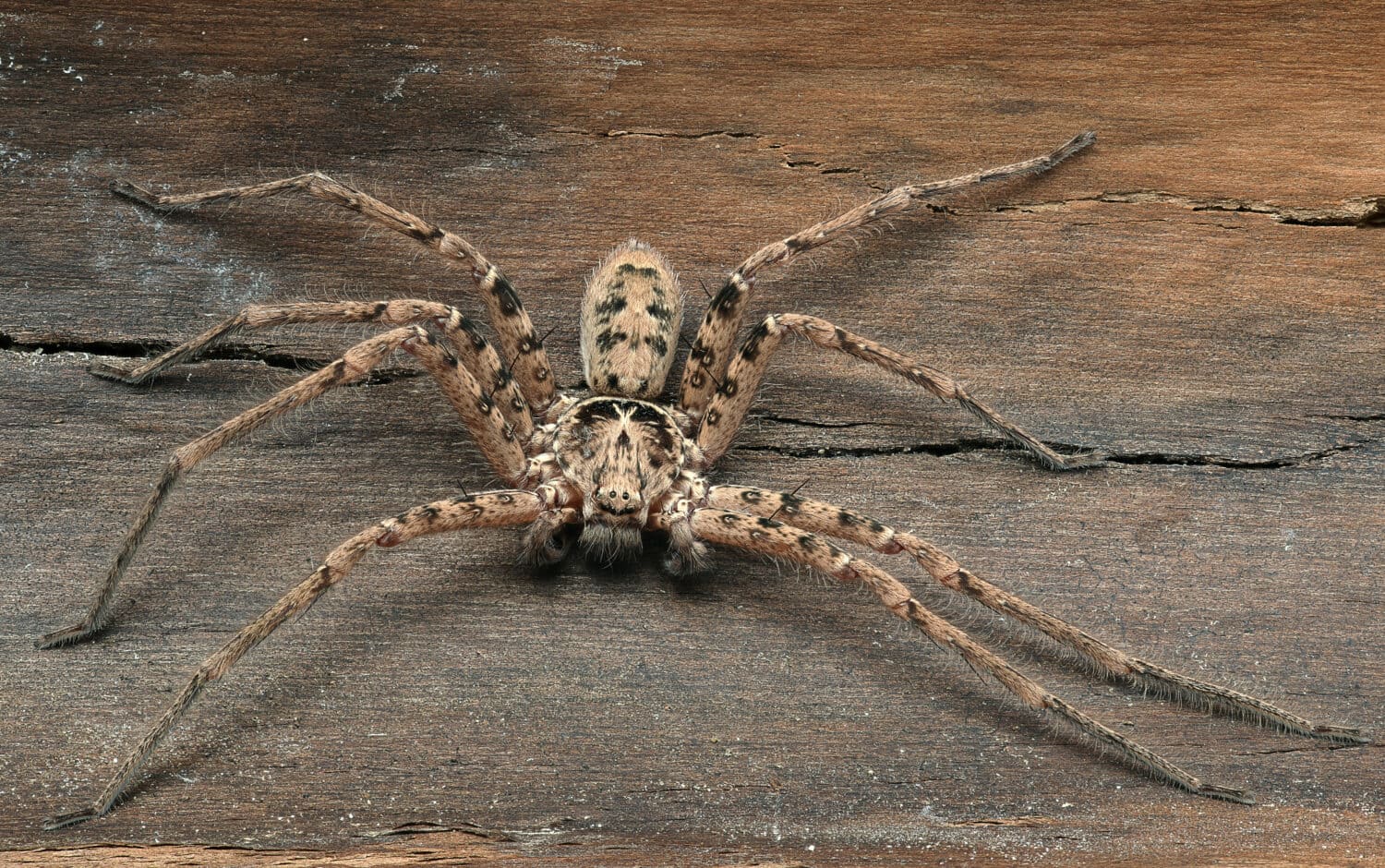
The crablike movement of the huntsman spider earns it the alternate name of giant
crab spider
.
©iSKYDANCER/Shutterstock.com
Huntsman spiders are aptly named. Also called giant crab spiders, these arachnids are efficient in locating and catching prey. They’re members of the Sparassidae family and there are nearly 1400 species, most of which are brown or gray with spindly legs and hairy bodies. They run at top speeds of 2.3 miles per hour, like several of the other spiders on our list. These spiders don’t catch prey by spinning webs, although they can release spider silk. Another interesting fact is that huntsman spiders can be either solitary or live in a colony depending on circumstances.
Huntsman spiders reside anywhere insects are easy to find, from untamed forests to city homes. Like many other resilient arachnids, these spiders crawl around every continent besides Antarctica.
7. Giant House Spider — 1.15 Mph

The giant house spider demonstrates low aggression, despite its intimidating size.
©David McElroy/Shutterstock.com
The giant house spider (Eratigena atrica) is a close relative of the house spider. The main difference between the two is size, as the giant variety can have a leg span of nearly three inches. If you’ve ever heard of this arachnid called the aggressive house spider, don’t be fooled. This name comes from its no-nonsense hunting strategy, which involves tackling prey. When it comes to humans, giant house spiders are relatively timid and tend to avoid confrontation. They’re featured on our list of fastest spiders because they move at speeds of up to 1.15 miles per hour.
These homebodies can be found anywhere else but indoors. They favor dark corners and crevices, and they prefer warm weather. Giant house spiders reside on multiple continents, including North America and Africa to name just two.
8. Jumping Spider — 0.91 Mph
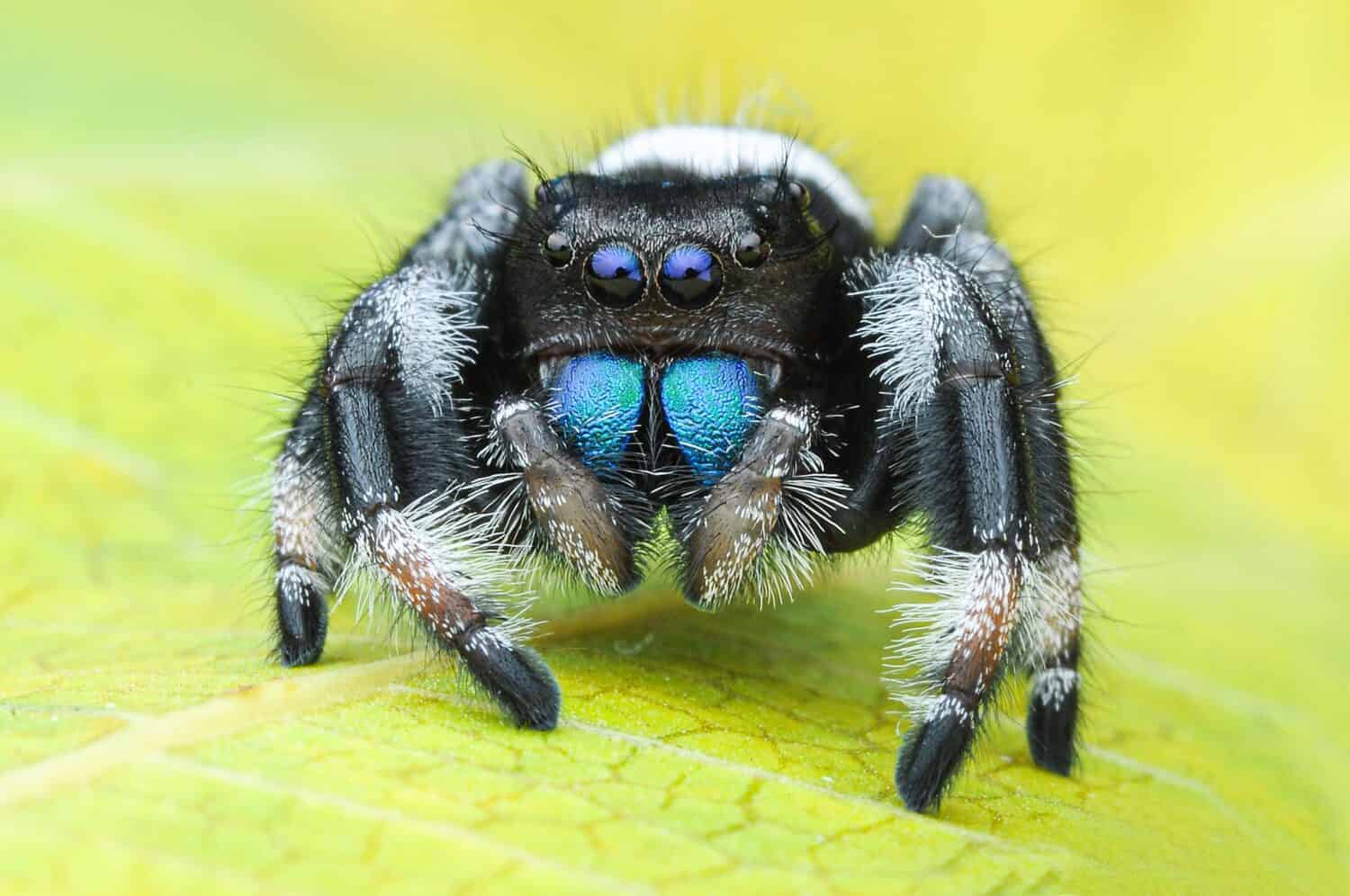
These cute spiders can jump distances of more than 50 times their body length.
©Arif Supriyadi/Shutterstock.com
Jumping spiders are members of the Salticidae family of arachnids. These social media darlings are considered cute by some thanks to their colorful markings, round eyes, and fluffy little bodies. Despite the adorable visage, jumping spiders are brutal killers who attack prey and inject it with venom before consuming it. They’re featured on our list because they can travel at speeds up to 0.91 miles per hour, and they can jump up to 50 of their own body lengths.
Although these tiny spiders are found all over the world — excluding Antarctica — their conservation status is considered vulnerable.
9. Flattie Spider — 3,000 degrees per second
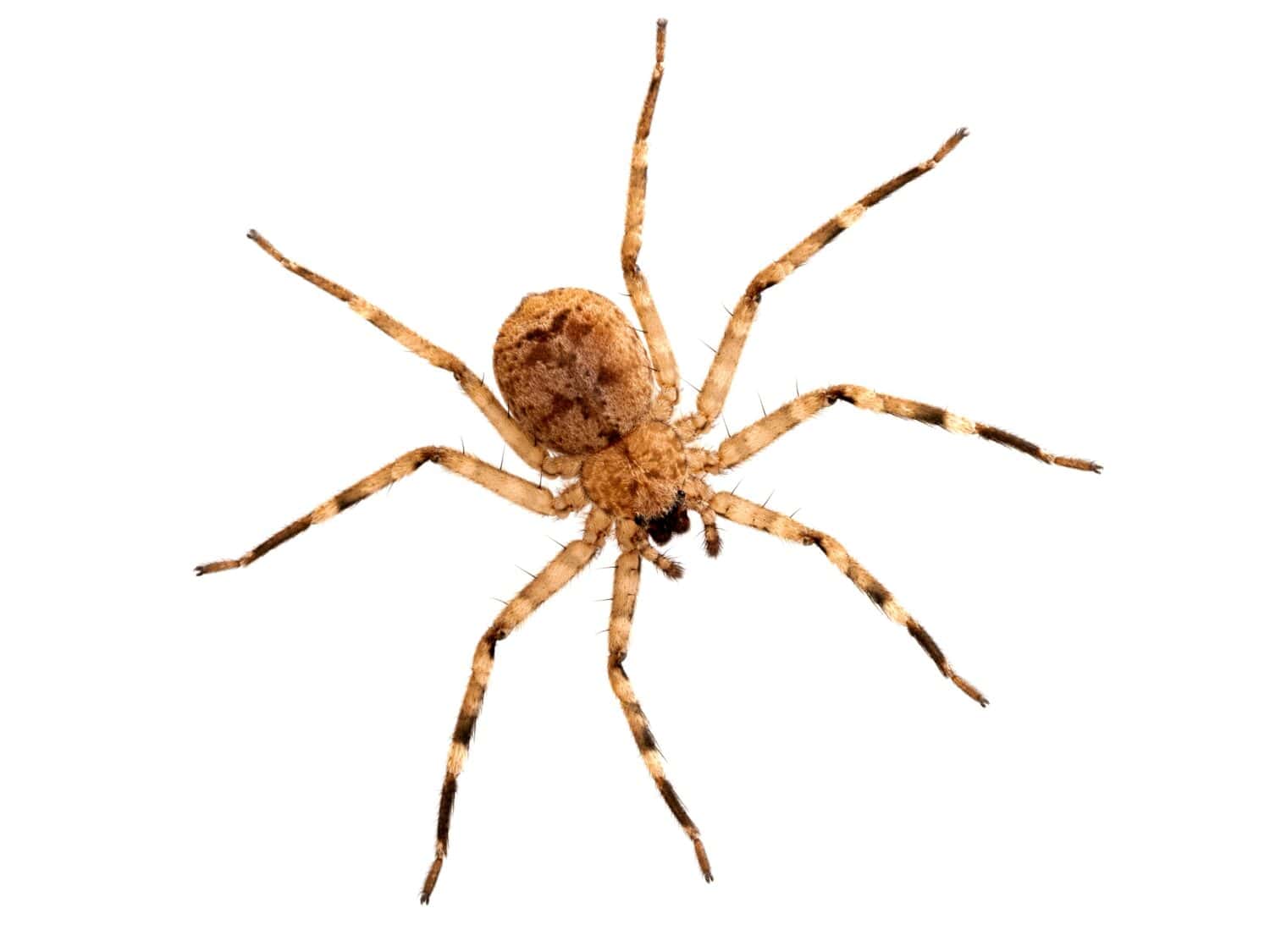
Flattie spiders are named for their ability to flatten their bodies in order to fit in small spaces.
©Ernie Cooper/Shutterstock.com
Also known as the wall crab spider, the flattie spider can reach remarkable speeds as it spins. Its common name comes from the spider’s tendency to flatten itself for concealment purposes. Like other members of the Selenopidae family, these spiders run and strike quickly. It’s estimated that one of these arachnids can spin at 3,000 revolutions per second to catch an insect — faster than we can blink. The brown coloration and lightning-fast speed make this spider difficult to catch or even spot.
Flattie spiders are found on most continents, although they favor subtropical and tropical regions. The location may depend on the exact species; for example, Anyphops lives in South Africa while Karaops resides in Australia. Although names and locations may vary, all flatties are fast movers.
10. Grass Spider — Mph Unknown
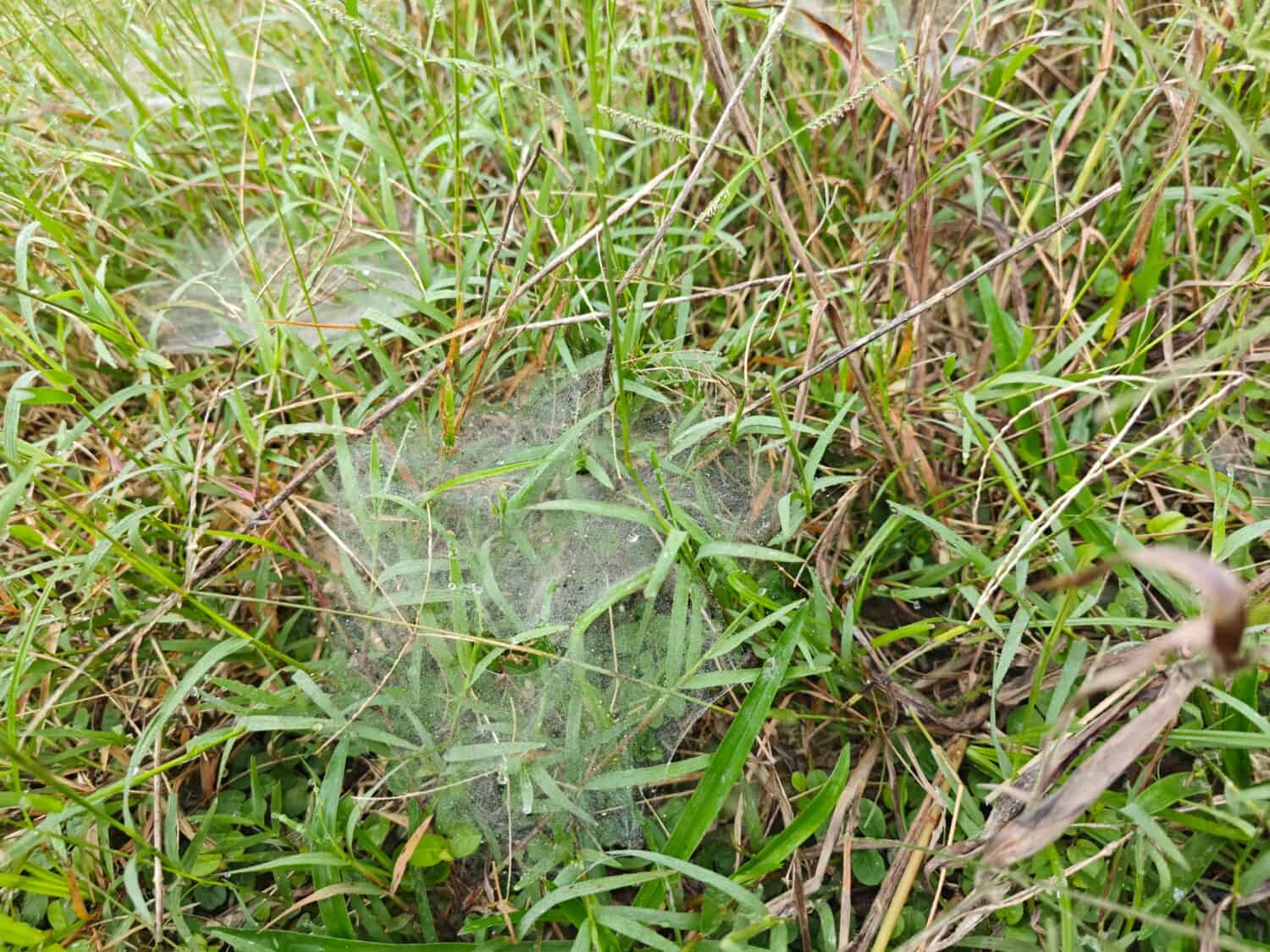
Although grass spiders are tiny, they’re efficient hunters and fast movers.
©Young Swee Ming/Shutterstock.com
Although it’s not clear exactly how fast a grass spider can run, the consensus is that these tiny arachnids move quickly. Considered some of the fastest spiders in the world, they tend to live in grassy areas. They eat moths and crickets, plus they eradicate common garden pests such as aphids. Although they are venomous for the purpose of paralyzing prey, they aren’t harmful to humans. In fact, grass spiders’ fangs aren’t big enough to break the skin.
Grass spiders live in North America, including in Mexico and the United States. However, you can also find them in Russia and Ukraine. Their ability to adapt to various climates is one reason these resilient arachnids are so plentiful in population.
Summary of the Top 10 Fastest Spiders in the World
| Ranking | Spider | Top Speed |
|---|---|---|
| 1 | Triangle weaver | 1692 mph |
| 2 | Slingshot spider | 540 mph |
| 3 | Camel spider | 10 mph |
| 4 | Moroccan flic-flac spider | 3.60 mph |
| 5 | Hobo spider | 2.23 mph |
| 6 | Huntsman spider | 2.23 mph |
| 7 | Giant house spider | 1.15 mph |
| 8 | Jumping spider | 0.91 mph |
| 9 | Flattie spider | 3,000 degrees per second |
| 10 | Grass spider | Mph unknown |
The photo featured at the top of this post is © Ondrej Michalek/Shutterstock.com
Thank you for reading! Have some feedback for us? Contact the AZ Animals editorial team.






